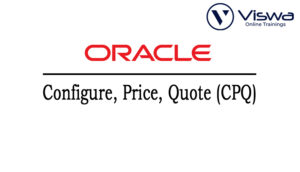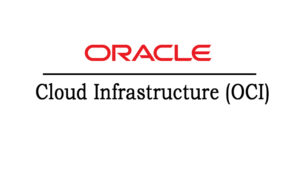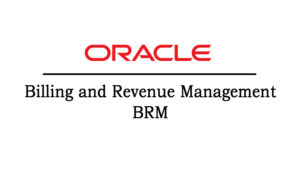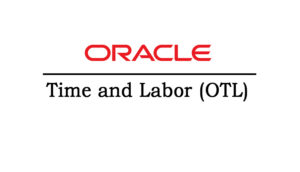SCRUM Master Certification Training
One of the top providers of online IT training worldwide is VISWA Online Trainings. To assist beginners and working professionals in achieving their career objectives and taking advantage of our best services, We provide a wide range of courses and online training.
Learners : 1080
Duration : 25 Days
About Course
A expert who guides a team using Agile project management is known as our Scrum Master. To ensure a successful output, a Scrum Master encourages all team member and leadership engagement and communication. Scrum is an agile development methodology used to create large projects, most frequently software. There are numerous Agile frameworks, and Scrum is a well-liked choice for projects that move quickly. Enrol today to earn your certification.
SCRUM Master Training Course Syllabus
✔ Why Agile?
✔ Traditional Development
✔ Problems with traditional software development
✔ Usage of features in a system
✔ Makings of a new approach
✔ Agile Manifesto
✔ Principles behind the Agile Manifesto
✔ Authors of the Agile Manifesto
✔ Agile Project Management
✔ Agile Project Management Life-cycle
✔ Agile Project Management Framework
✔ APM Framework
✔ What is Scrum?
✔ Certified Scrum Master
✔ Professional Scrum Master
✔ PMI-ACP
✔ Agile Methodologies
✔ Project Properties in Crystal
✔ Samples of Crystal
✔ Feature-Driven-Development
✔ Roles in FDD
✔ Processes in FDD
✔ Project tracking in FDD
✔ Project tracking methodology
✔ FDD usage guidelines
✔ Dynamic Systems Development Methodology (DSDM)
✔ Planning in DSDM-Atern
✔ DSDM Principles and techniques
✔ eXtreme Programming
✔ XP Values
✔ XP Practices
✔ XP Benefits
✔ Agile Unified Process
✔ Agile Unified Process (AUP)
✔ Agile Unified Process – System Development
✔ Scrum
✔ Scrum Life-cycle
✔ Stakeholders
✔ Chicken and Pig roles
✔ Management of stakeholders
✔ Scrum life-cycle
✔ Product Owner
✔ Product Owner’s role
✔ Prioritization
✔ Cost-Benefit Analysis
✔ Prioritization based on Value and Risk
✔ Prioritizing requirements – MoSCoW
✔ Prioritizing requirements – Kano Model
✔ Prioritizing requirements – Relative weighting method
✔ Scrum life-cycle
✔ Scrum Master
✔ What does a Scrum Master Do
✔ What the Scrum Master Should NOT do
✔ Scrum life-cycle
✔ The team – aka Developers
✔ Building a Scrum team
✔ Building empowered teams
✔ Role of a Manager
✔ Manager 2.0: A new role for a Manager
✔ Some specialist roles you may want
✔ Time-boxing
✔ Advantages of time-boxing
✔ Time-boxing
✔ Release
✔ High-level view of a release
✔ Sprints
✔ Factors in selecting a Sprint duration
✔ Intensity of work
✔ No changes in a Sprint
✔ Daily Scrum
✔ Sprint Review
✔ Also check during a review
✔ Sprint Retrospective
✔ What is a Sprint Retrospective
✔ Making retrospectives effective
✔ Making retrospectives effective
✔ Product backlog
✔ Product, release, and sprint backlog
✔ User story
✔ Story card information
✔ Multiple stories may be required to complete a feature
✔ Epics
✔ Writing good stories
✔ Splitting user stories
✔ Splitting user stories (big picture)
✔ Splitting user stories (user experience)
✔ Splitting user stories (Others)
✔ Refactoring
✔ Pair programming
✔ Continuous integration
✔ Practices of continuous integration
✔ Configuration management
✔ Quality in Agile
✔ Scrum Quality – Home truths
✔ Planning for a Sprint
✔ Test-driven development
✔ Test-driven development
✔ Advantages of TDD
✔ Definition of “Done”
✔ Principles behind Agile planning
✔ Iterations allow for mid-course corrections
✔ Multiple levels of planning
✔ Release planning
✔ Steps to planning a release
✔ Release Planning
✔ Velocity
✔ Sprint planning
✔ Velocity-driven sprint planning
✔ Commitment-driven sprint planning
✔ Planning for each story
✔ Keep this in mind before finalizing the plan
✔ Principles behind Scrum estimation
✔ Estimation techniques
✔ Types of estimates
✔ Uncertainty in estimates
✔ Over-estimation and under-estimation
✔ What contributes to size
✔ Measures of size
✔ Ideal days
✔ Story points
✔ Estimation techniques – Planning poker
✔ Affinity estimation
✔ Affinity estimation – process
✔ Monitoring Scrum Projects
✔ Definition – Metrics
✔ Types of metrics
✔ Metrics do’s and don’ts
✔ Charts in Scrum
✔ Burn-down chart: Iteration level
✔ Burndown chart: Project level
✔ Burndown chart: Bar style
✔ Burn-up and Burn-down chart
✔ Cumulative Flow Diagram
✔ Parking lot diagram
✔ Escaped defects found
✔ Velocity chart
✔ Progress Chart
✔ Niko Niko calendar
✔ Information radiators
✔ Information radiators: Big visible charts
✔ Information radiators
✔ Scrum on large projects
✔ Scrum-of-Scrum
✔ Product coordination teams
✔ Scrum on maintenance projects
✔ Distributed scrum teams
✔ Best practices in distributed scrum
✔ Structure-1: Team in India; PO in US
✔ Structure 2: Team split in two locations
✔ People practices in distributed Scrum
✔ Practices in distributed scrum
✔ Practices in distributed scrum
✔ Scrum-Contracting
✔ Fixed Price/fixed scope
✔ Scrum in fixed-price projects
✔ Transitioning a team/project to Scrum
✔ Transitioning a team/project to Scrum
| Live Instructor Based Training With Software |
| Lifetime access and 24×7 support |
| Certification Oriented content |
| Hands-On complete Real-time training |
| Get a certificate on course completion |
| Flexible Schedules |
| Live Recorded Videos Access |
| Study Material Provided |
SCRUM Master Training - Upcoming Batches
Coming Soon
8 PM IST
Coming Soon
AM IST
Coming Soon
4 PM IST
Coming Soon
AM IST
Don't find suitable time ?
CHOOSE YOUR OWN COMFORTABLE LEARNING EXPERIENCE
Live Virtual Training
-
Schedule your sessions at your comfortable timings.
-
Instructor-led training, Real-time projects
-
Certification Guidance.
Self-Paced Learning
-
Complete set of live-online training sessions recorded videos.
-
Learn technology at your own pace.
-
Get access for lifetime.
Corporate Training
-
Learn As A Full Day Schedule With Discussions, Exercises,
-
Practical Use Cases
-
Design Your Own Syllabus Based
SCRUM Master Online Training FAQ'S
- Product Owner: The product owner is in charge of enhancing ROI by determining product features, prioritizing these items into a list, determining what should be prioritized for the next sprint, and much more. These are re-prioritized and modified on a regular basis.
- Scrum Master: This person assists the team in learning how to use Scrum to maximize business value. The scrum master removes roadblocks, keeps the team focused, and helps the team embrace agile methods.
- Scrum Team: A Scrum Team is a group of people who work together to guarantee that the stakeholders’ needs are met.
Teams are able to provide value to clients more quickly and with fewer challenges because to the iterative project management and software development technique known as agile. Instead of producing everything in one “big bang” release, an agile team produces work in discrete, consumable bits. Regular evaluations of requirements, methods, and results give teams a way to naturally adjust to change.
- Commitment: Scrum teams need to be able to work together to achieve a common objective. This calls for trusting one another to finish tasks and perform to the best of their abilities. It can only happen if every team member is fully committed to the task at hand and the group as a whole.
By promoting effective sprint planning and protecting teams from mid-sprint scope changes and excessive product owner pressure, scrum masters and team leaders may foster commitment. - Focus: To make the most of each sprint, each team member must maintain attention on the task at hand and how it relates to the sprint goal.
To keep the team members’ attention throughout sprints, scrum masters may restrict the number of tasks or priorities allocated to each team member. Encourage complete team involvement in daily Scrum meetings to help everyone stay focused on their allocated tasks. - Openness: For the Scrum team to make the most progress in the shortest amount of time, each team member must be completely honest about their own development. The purpose of the daily Scrum meeting is to identify and resolve issues. If team members aren’t open about any issues or challenges they’re encountering, that won’t happen. Additionally, team members must be open to working together and consider one another as essential to the success of the project.
One of the best ways for Scrum masters to promote transparency with their teams is by being honest with them. In addition to being essential for making necessary modifications, providing candid feedback during daily Scrum sessions will encourage team members to do the same. - Respect: Understanding that no one person or their contribution is more significant than another is a prerequisite for respect in a Scrum team. Respect also requires having confidence in your teammates to do their tasks, paying attention to and taking into account their suggestions, and recognizing their accomplishments.
Scrum masters may help their teams appreciate one another by treating them with respect, including the product owner, stakeholders, and team members. - Courage: Scrum teams must have the guts to be open, truthful, and sincere with themselves and with stakeholders about the project’s development and any bottlenecks they run into. The team’s members must also have the courage to ask for help when they need it, do new things they’ve never done before, respectfully disagree, and engage in candid discussion.
Scrum masters can, like respect, in the first place, model courage by doing so. The Scrum Master must possess the self-assurance to confront stakeholders and product owners in order to prevent mid-sprint alterations or scope creep.
- Transparency: Those responsible for the result must be able to see crucial steps in the process. For viewers to understand what they are seeing, transparency requires that those components be defined by a common standard. For instance, everyone involved in the process must use the same terminology, and both those doing the work and those evaluating the finished increment must agree on what constitutes “done.”
- Inspection: Scrum users must regularly review Scrum artifacts and progress towards a Sprint Goal in order to discover unwanted deviations. Their inspections shouldn’t be conducted frequently enough to interfere with their work. The best inspections are those that are diligently carried out at the site of employment by qualified inspectors.
- Adaption: The procedure or the material being processed must be changed if an inspector determines that one or more process steps depart from permissible bounds. An adjustment must be made as soon as is practical in order to prevent further divergence.
By learning through VISWA Online Trainings, advance in your job.
Reviews
 Vishnu Gadipudi2023-08-20I Enrolled in VISWA Online Trainings for IBM Integration BUS course . Recently I Completed IBM Integration BUS Batch. It was Really Awesome Experience. Best Place To Learn , Experienced Trainer, Gives Us High Level Knowledge....
Vishnu Gadipudi2023-08-20I Enrolled in VISWA Online Trainings for IBM Integration BUS course . Recently I Completed IBM Integration BUS Batch. It was Really Awesome Experience. Best Place To Learn , Experienced Trainer, Gives Us High Level Knowledge.... Navya Biradavolu2023-08-20I was enrolled for looker Bl Tool,it was amazing experience . especially soft skill batch is one of my favourite batch . overall learning process is quite impressive.
Navya Biradavolu2023-08-20I was enrolled for looker Bl Tool,it was amazing experience . especially soft skill batch is one of my favourite batch . overall learning process is quite impressive. Indla sneha2023-08-20I have joined I have joined VISWA Online TRAININGS for Java full stack course and i have completed Advance Java module. I had a good knowledge of Hibernate, spring,spring boot,spring MVC. Tutor has knowledge in depth and is supportive. Srinadh sir solved all our doubts....
Indla sneha2023-08-20I have joined I have joined VISWA Online TRAININGS for Java full stack course and i have completed Advance Java module. I had a good knowledge of Hibernate, spring,spring boot,spring MVC. Tutor has knowledge in depth and is supportive. Srinadh sir solved all our doubts.... bindu hima2023-08-20I am recently completed Talend course and trainer is Rajendra very professional and helpful. All the doubts were solved in a precise manner.
bindu hima2023-08-20I am recently completed Talend course and trainer is Rajendra very professional and helpful. All the doubts were solved in a precise manner. Tarunasree Gowra2023-08-20"I truly enjoyed this course." Chaitanya sir fantastic-very knowledgeable. Sir give us very informative and clear instruction on how to achieve the goal. Thank you!
Tarunasree Gowra2023-08-20"I truly enjoyed this course." Chaitanya sir fantastic-very knowledgeable. Sir give us very informative and clear instruction on how to achieve the goal. Thank you! Tejaswini Kommu2023-08-20Overall Linux Admin sessions batch was very good. Mr. RAM Krishna teaching was very helpful to remind our basic concepts in linux & networking.
Tejaswini Kommu2023-08-20Overall Linux Admin sessions batch was very good. Mr. RAM Krishna teaching was very helpful to remind our basic concepts in linux & networking. Gopanaboina Mounika2023-08-20It was great learning with such a great and experienced staff. Praveen Sir (Oracle EPM Cloud - FCCS) was very helpful and operations team also very helpful in solving any minor problems students go through process.
Gopanaboina Mounika2023-08-20It was great learning with such a great and experienced staff. Praveen Sir (Oracle EPM Cloud - FCCS) was very helpful and operations team also very helpful in solving any minor problems students go through process. Jyothi Gutlapalli2023-08-20I like to share my experience which provide lots of courses and one of those I recently completed my Salesforce BA Course and I like to tell you it was a great experience and my knowledge and confidence is really boosted after completing this course.
Jyothi Gutlapalli2023-08-20I like to share my experience which provide lots of courses and one of those I recently completed my Salesforce BA Course and I like to tell you it was a great experience and my knowledge and confidence is really boosted after completing this course. Harshibandi2023-08-20Good experience and great learning platform for Hyperion Essbase and Planning. The faculty is also well trained and soft spoken.
Harshibandi2023-08-20Good experience and great learning platform for Hyperion Essbase and Planning. The faculty is also well trained and soft spoken. Chaitu Viswa2023-08-20It was very good session for QlikView. I would like to thank to teacher Mr.Chandu for providing guidance for the required modules. Thanks VISWA Team for giving apportunity to leran new skills.
Chaitu Viswa2023-08-20It was very good session for QlikView. I would like to thank to teacher Mr.Chandu for providing guidance for the required modules. Thanks VISWA Team for giving apportunity to leran new skills.




